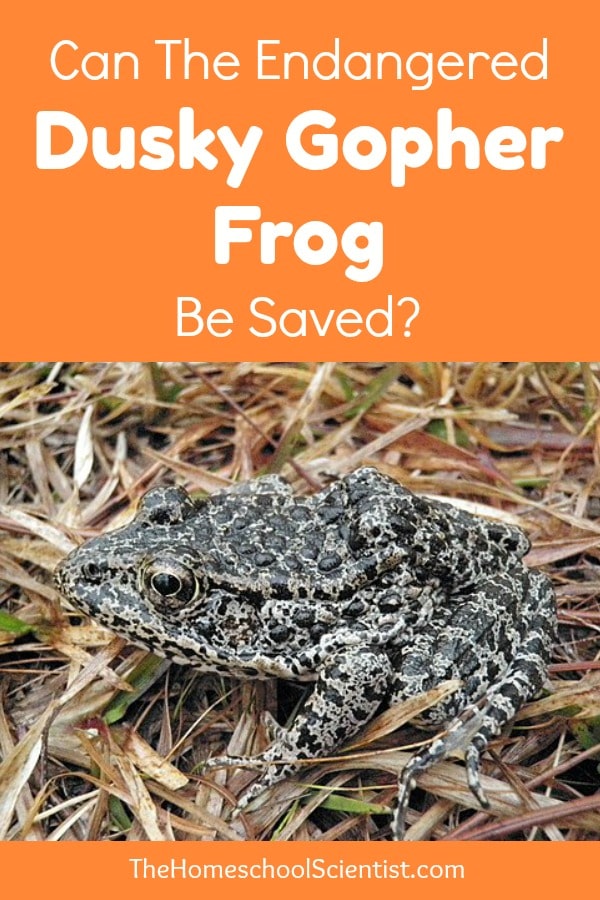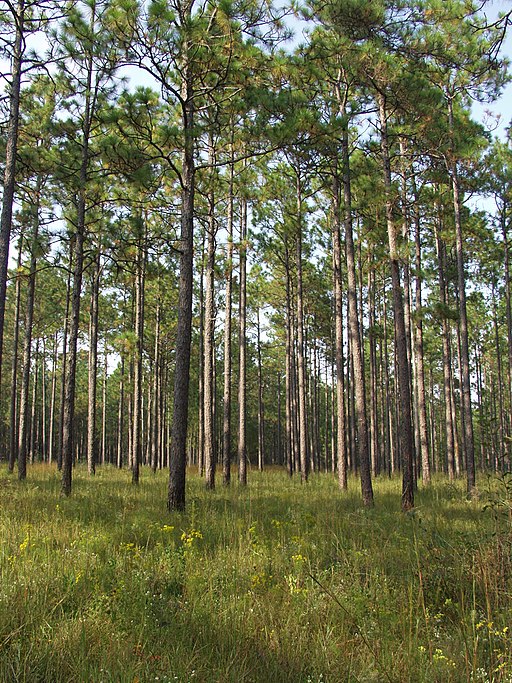Can The Endangered Dusky Gopher Frog Be Saved?

This post is part of our endangered species series.
The story of the Dusky Gopher Frog, or Mississippi Gopher Frog, is an interesting one. This amphibian once was found in abundance in the longleaf pine forests of southern Louisiana, southern Alabama, and southern Mississippi. Now, the Dusky Gopher Frog is only found in 3 ponds in Mississippi. In 2012, the IUCN (International Union for the Conservation of Nature) identified the Dusky Gopher Frog as one of the top 100 most endangered species in the world.
Dusky Gopher Frog Facts
- Considered a mid sized frog with the adults being 3 inches long
- Dark colored ranging from black to gray to brown with dark spots and warts on their backs
- Feeds on insects, worms, spiders, and judging by the size of its large mouth, possibly other frogs and toads
- Male calls sound like a snoring human
- Have been known to call underwater
- When threatened, the frog defends itself by inflating the body and secreting a pungent, bitter, milky liquid from the warts on its back
- When exposed to light it covers its eyes with its front feet
- Live in burrows created by the Gopher Tortoise, hense their name
- Mostly found in the longleaf pine forests
- Adults breed in fishless, shallow, temporary wetlands within the longleaf pine forests
Why Is The Dusky Gopher Frog Endangered?

Longleaf pine forests historically covered 90 million acres in the South, from Virginia to Texas. Now, less than 5% of these forests remain due to deforestation by the paper industry, human development, urban sprawl, and fire suppression. The decline of any habitat creates a decline in the species that require the unique characteristics of that environment. The Dusky Gopher Frog needs the ground cover of the forest for protection and food, as well as the temporary wetlands of the forest for breeding.
Another species that, also, lives in the longleaf pine forests is the Gopher Tortoise. The Gopher Tortoise and the Dusky Gopher Frog have a special relationship. The frogs live in the burrows that the Gopher Tortoises create. The destruction of the forest has caused the numbers of Gopher Tortoises to decline. Lower numbers of tortoises mean less burrows for frogs. This lack of shelter is, also, responsible for the decrease in the Dusky Gopher Frog population.
These conditions have been devastating to the Dusky Gopher Frog. Biologists estimate the total Dusky Gopher Frog population to now be less than 250 in the wild.
Dusky Gopher Frog Recovery Plan
Because of the endangered status of the Dusky Gopher Frog, the U.S. Fish and Wildlife Service was able to designate nearly 6,500 acres of land in Louisiana, Alabama, and Mississippi as critical habitats for the frogs. This is an important step in saving the remaining longleaf pine forests from further deforestation. There are, also, efforts to restore the longleaf pine forests across its historical range.
Herpetologists from several zoos across the U.S. are doing their part to save the Dusky Gopher Frog. They have collected tadpoles from their remaining breeding ponds and raised them in captivity. These frogs have not been released back into the wild yet. The U.S. Fish and Wildlife Service is still working to identify suitable places for the re-introduction of the frogs and are expected to do so in 2018.
Dusky Gopher Frog Links
Frog Resources
What Makes The Frog Tongue So Cool? {plus a frog craft}
Frog Unit Study Pinterest Board
Endangered Species Resource
I hold a master’s degree in child development and early education and am working on a post-baccalaureate in biology. I spent 15 years working for a biotechnology company developing IT systems in DNA testing laboratories across the US. I taught K4 in a private school, homeschooled my children, and have taught on the mission field in southern Asia. For 4 years, I served on our state’s FIRST Lego League tournament Board and served as the Judging Director. I own thehomeschoolscientist and also write a regular science column for Homeschooling Today Magazine. You’ll also find my writings on the CTCMath blog. Through this site, I have authored over 50 math and science resources.



